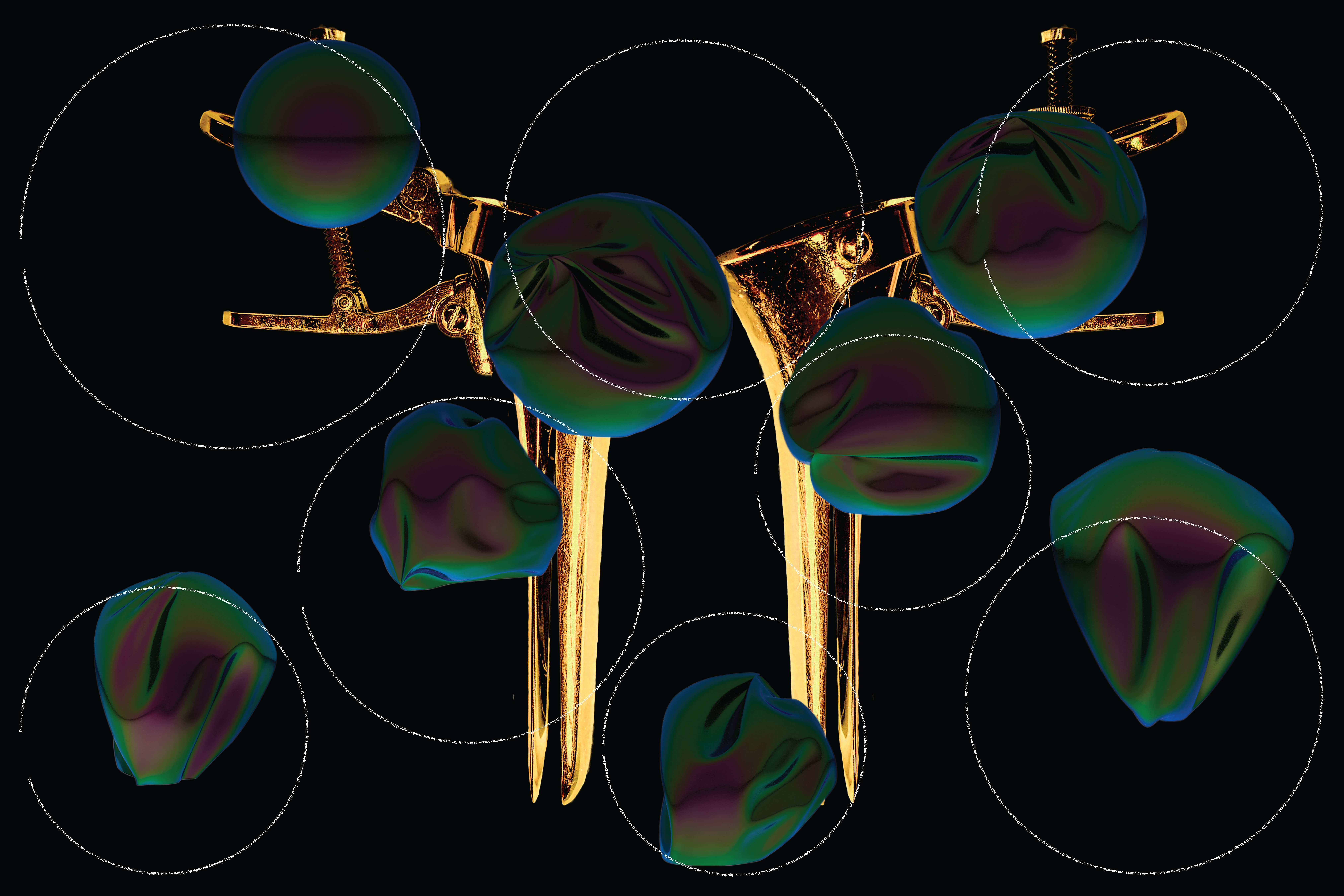I wake up with news of my new assignment. My last oil rig dried up, hopefully this next one will last the rest of my career.
I report to the camp for transport, meet my new crew. For some, it is their first time. For me, I was transported back and forth to my ex-rig every month for five years—it is still disorienting.
We suit up, go to quarantine and wait. Everything is covered with tarp so only the general shapes and lumps of things can be seen. The countdown starts and I see some newbies clench their eyes shut—it’s what is recommended—but I try to remain aware of my surroundings.
At “zero” the room shifts, square lumps become rectangle, circles become ovals. The world is melting, but it is done in an instant. We exit the quarantine zone and approach the rig via bridge.
Day One.
We get to work, silently, since the sound around us is overbearing and renders us mute. I look around my new rig, pretty similar to the last one, but I’ve heard that each rig is nuanced— thinking that you know will get you in to trouble.
I am responsible for assessing the stability of the structure and reporting to the manager. I climb up until I reach where I need to go—the walls are nice and thick. We have a scale that we use to help predict when our collection will begin. I get out my tools and begin measuring—we have two days to prepare.
I signal to the manager, he does a quick quality control of my assessment and nods in agreement. We have two days.
Day Two.
The noise is getting worse. We have sophisticated state-of-the-art equipment but it is noise that you can feel in your bones. I reassess the walls, it is getting more sponge-like, but holds together. I signal to the manager “still on track” by lifting my thumb up and away from my fist. He beckons for me to join the crew in prepping for collection.
I head over and see where they are in their process. They are nearly complete in the construction of the pipeline, I am impressed by their efficiency. I join the worker assembling the collection drums at the end. I can no longer see the bridge—we are covered in darkness.
Day Three.
It’s the last day before collection, potentially—it is dangerous for me to scale the wall at this stage. It is very hard to pinpoint exactly when it will start—even on a rig that you know very well. The manager at my ex-rig told me once that it used to run like clock-work but got more and more sporadic towards the end.
Some of the crew are getting restless, it happens. They make up games by jumping and running around, rough-housing—anything that doesn’t require accessories or words.
We prep for the first round of night shifts—all of us in the shelter except the watcher. At some time during the night, we are awoken.
Day Four.
The first signs of oil. The manager looks at his watch and takes note—we will collect stats on the rig for its entire tenure. We have two crew up at the top attempting to bottle neck the oil as it leaks and oozes out from above. It is brown and clumpy now, but it will go through a refinement process.
We continue our staggered sleep schedule—half and half now—as the liquid ebbs and flows at its own pace. The first day we collect two drums.
Day Five.
I’m up for my shift with two others. I’m second-in-command so I am the acting manager until we are all together again. I have the manager’s clipboard and I am filling out the stats. I see a clump starting to come my way, I note the time, the color and consistency—it is getting lighter and beginning to thin out.
A few more spurts spew out and we end up doubling our collection. When we switch shifts, the manager is pleased with our work—we have done our jobs well and we will be commended.
Day Six.
The oil has slowed to a trickle and has become very bright in color. Our work will be over soon, and then we will all have three weeks off until our next call. I check how many oil drums we have filled: two on the first day, four during my shift, four more during the manager’s shift, and we were on track to fill two, maybe three today. I’ve heard that there are some rigs that collect upwards of 20 drums. Maybe one day this rig will be that productive, but 13 drums is still a good haul.
Day Seven.
I awake and join the manager’s team. As expected, they only collected one drum, bringing our total to 14. The manager’s team will have to forego their rest—we will be back at the bridge in a matter of hours.
All of the drums are at the bottom, closest to the bridge, so we begin up top and disassemble our anchored structures. It is a quick process and we have all successfully repelled down to our liquid gold stash. We approach the bridge and exit. Someone will be waiting for us on the other side to process our collection.
Later, in the showers, the manager, gushing over my abilities, tells me that he will be recommending me for my own rig. I feel successful.
